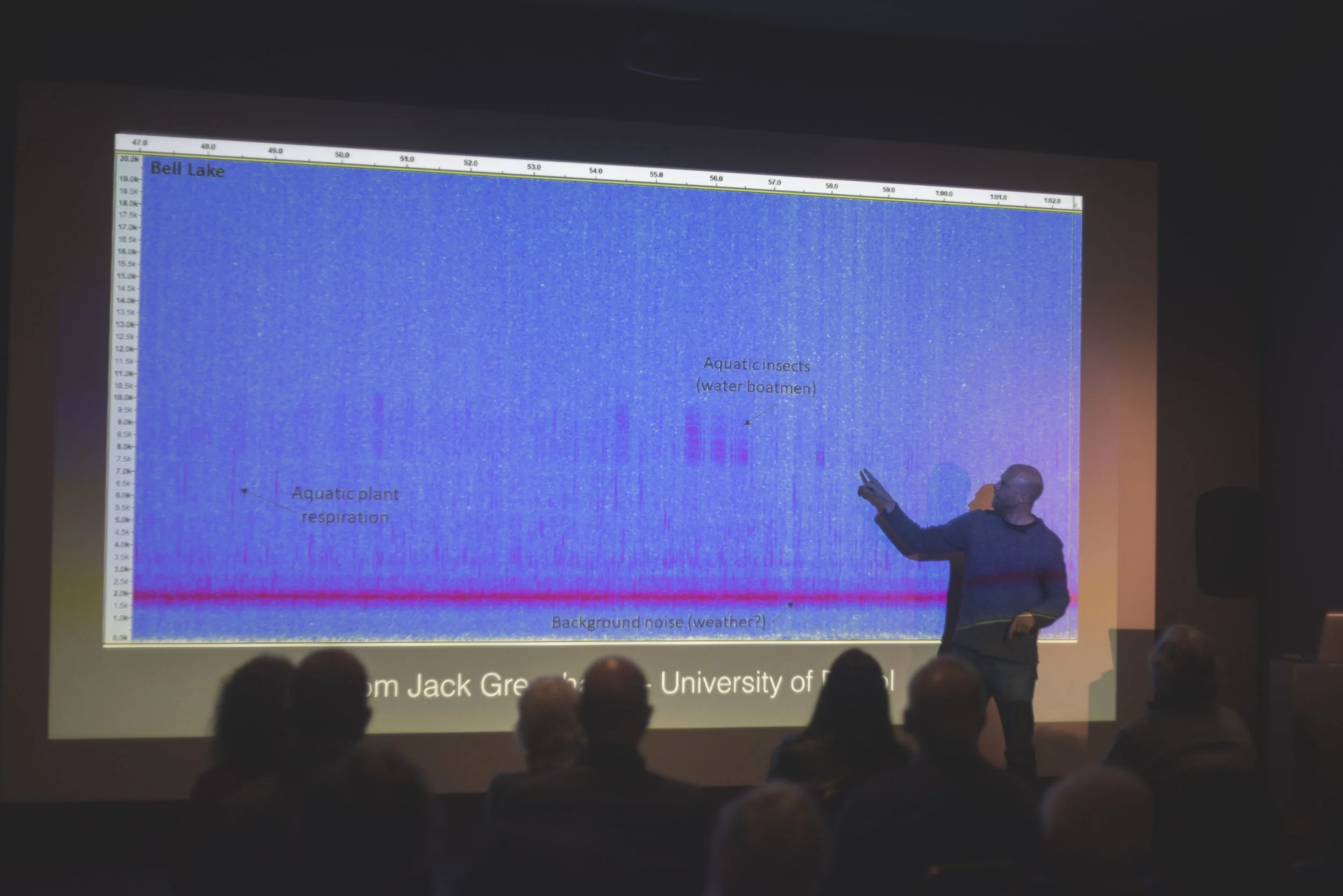RED RIVER STANNARY
The Red River Stannary was a one day event convened in order to share research, poetry and artworks developed as part of Red River: Listening to a Polluted River. The photos below capture a flavour of the talks, discussions and workshops that took place throughout the day. The Stannary was held at CAST in Helston Cornwall on Saturday 9th October, 2021.
The event was produced by Field Notes CIC and photographed by Harvey Gorst.
Project lead Dr John Wedgwood Clarke opened the Stannary in the screening space at CAST. He gave an introduction to the event and the Red River research project as a whole, including a poetry reading from his new long poem Red River. You can listen to the talk here.
Beautiful Ugly Rivers was a guided writing session held in Room 15 with John Wedgwood Clarke, the workshop used creative writing techniques to explore the way we think about rivers and what they may think about us.
In Room 4, three members of the Red River Rescuers volunteer group (Steve Jones, Cerin Poland and Jo Poland) led a discussion exploring the key ideas informing their conservation, restoration and wilding work. The panelists took questions around what they are rescuing the river from, how they are doing it and how they will know when its rescue is complete.
Sound artist Dr Rob Mackay (Newcastle University) spoke about his recording process, his interest in the river and the discoveries he has made through working with it. Rob has collaborated with John Wedgwood Clarke throughout his research on the Red River and the presentation concluded with a new sound work incorporating extracts of John's poetry. You can listen to the talk here.
John led another session of Beautiful Ugly Rivers in the afternoon, meanwhile in Room 4 there was open access to resources about the Red River alongside prompts to create your own response.
Rob’s sound recordings were also installed with screenings of Dr Keith Russ’ computer-based 3D Mine Maps of Cornwall, these can be found on Facebook Abandoned Mine Models page or via his website www.abandonedminemodels.com.
Resources included archival material sourced from Kresen Kernow (the home for Cornwall’s archives), John’s research surrounding the river and a selection of books from writers and photographers who have lived and worked along its banks.
A presentation by renowned landscape photographer Jem Southam took place in the afternoon, Jem lived along the Red River at Higher Condurrow in the 1980s, making a body of work documenting it titled The Red River, which was exhibited and published. For this talk he spoke briefly about the book, but focused primarily showing pictures of the valley made around this time but never previously seen. You can listen to the talk here.
John Wedgwood Clarke led a conversation between Karen Hudson-Edwards, Professor of Sustainable Mining at Camborne School of Mines and geomicrobiologist Dr Laura Newsome from the University of Exeter. The discussion considered the environmental impacts of mining on rivers such as the Red River and how sustainable mining aims to reduce negative impacts whilst protecting ecosystems. They explained how microbes contribute to the chemistry and pollution of the river and make it an extreme environment that can then provide a habitat for life. Other topics included: the future of the river, dealing with waste and the importance of doing the dirty work in our own backyards.
The final event of the Stannary was a conversation between commissioned artist Naomi Frears and Dr John Wedgwood Clarke about the new work she created for the project, they reflected on the Wheal Seton settling tanks they visited along the river and the relationship between moving image, text and spoken word. This was followed by a screening of Naomi’s new moving image piece Red River.
Before entering the screening space there was a display of material themed around the river including Jem Southam’s photographic book The Red River; A London Family, a novel by Mary Vivian Hughes who holidayed in Cornwall as a child; and matter collected along the river including sediment and water. Alongside this, visual artist Ian Penna exhibited Pirate Run (2012), a film from the project Feeding off the Sediment; capturing his descent by canoe from Roscroggon adit at the point of convergence with the Red River to the North Atlantic Coast.

























